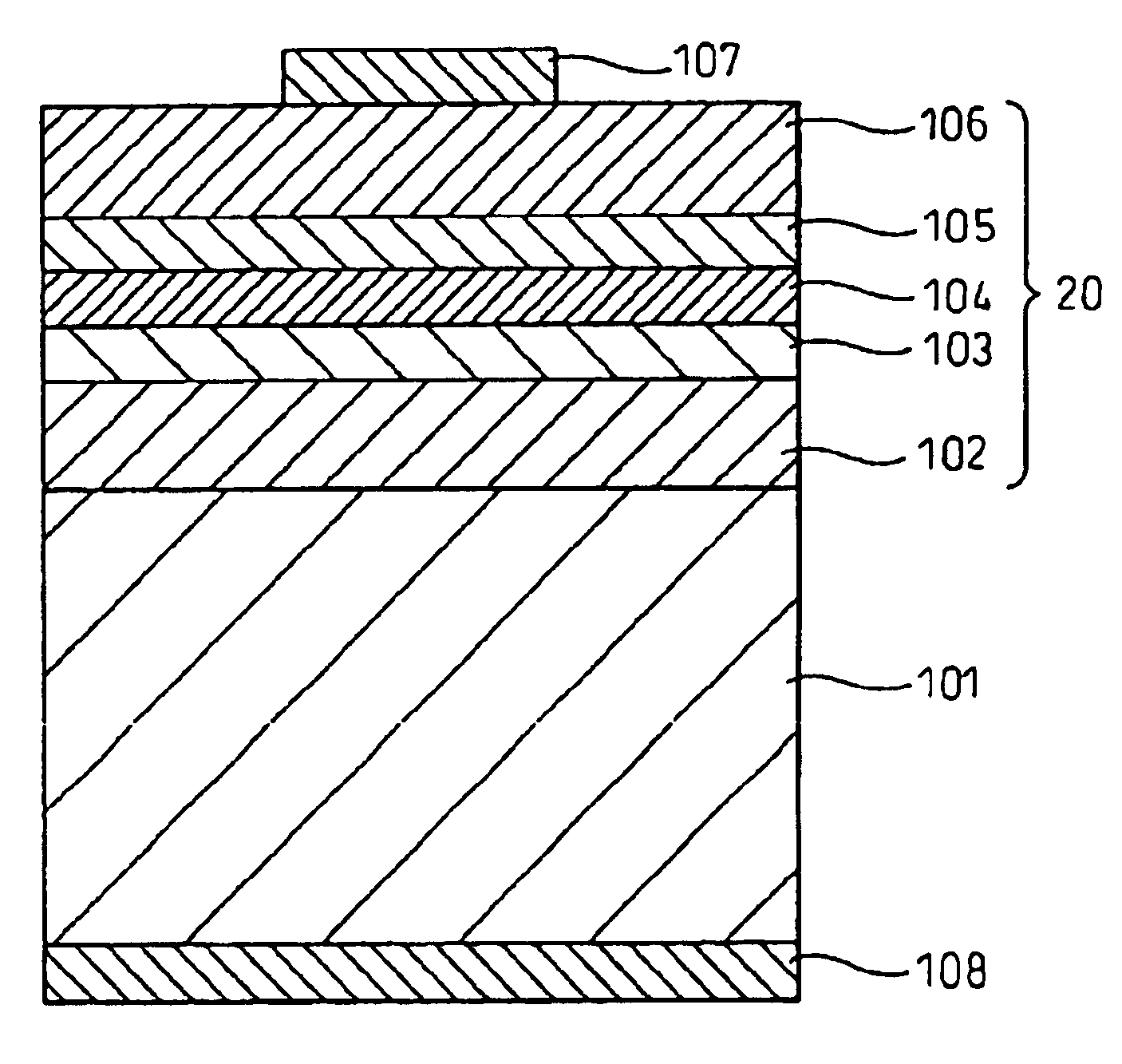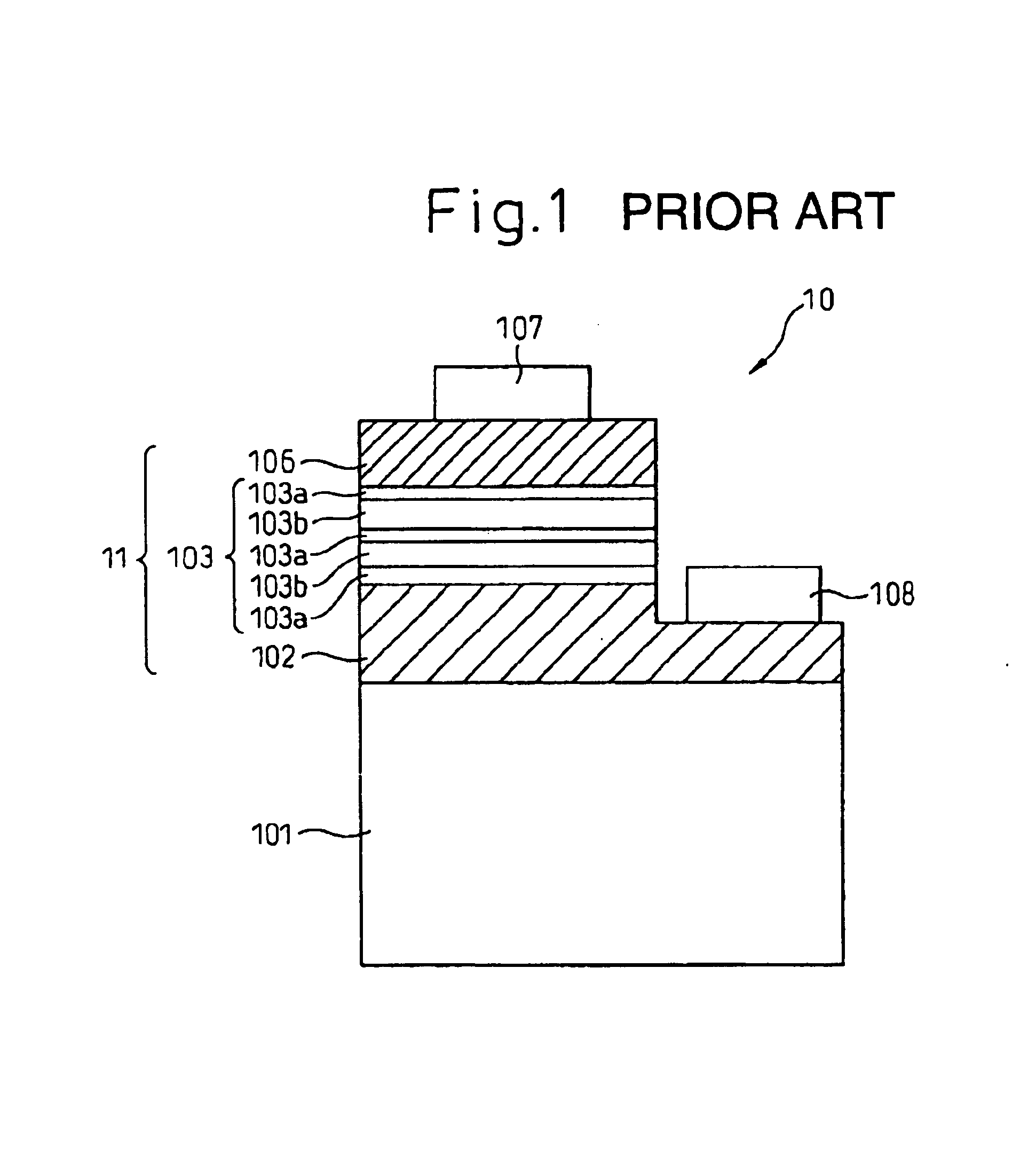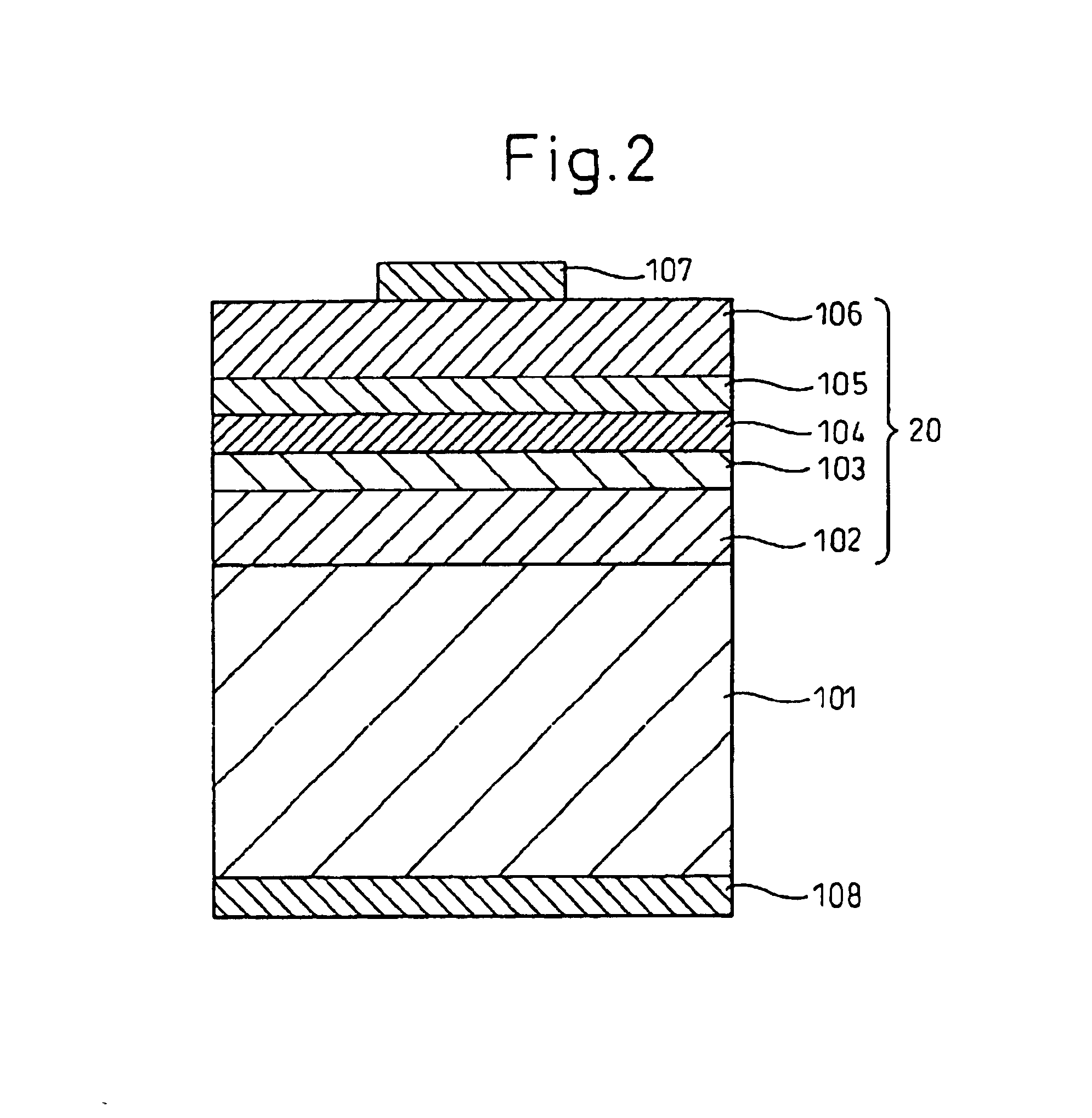Boron phosphide-based semiconductor light-emitting device, production method thereof and light-emitting diode
- Summary
- Abstract
- Description
- Claims
- Application Information
AI Technical Summary
Benefits of technology
Problems solved by technology
Method used
Image
Examples
example 1
[0101]A double-hetero-junction light-emitting diode (LED) having a pn-junction structure including an upper cladding layer formed of p-type boron phosphide and a light-emitting layer formed of n-type gallium nitride was produced as an exemplary boron phosphide-based semiconductor light-emitting device. FIG. 2 schematically shows a cross-section of the produced LED.
[0102]A phosphorus (P)-doped n-type silicon {111} single crystal was used as a single-crystal substrate 101. Firstly, on the {111} surface of the single-crystal substrate 101, a lower cladding layer 102 formed of an undoped n-type boron phosphide layer was vapor-phase grown through atmospheric-pressure (near atmospheric pressure) MOCVD at 925° C. by use of a triethylborane ((C2H5)3B) / phosphine (PH3) / hydrogen (H2) system. The n-type boron phosphide layer serving as the lower cladding layer 102 was formed at a concentration ratio regarding sources fed to a vapor phase growth zone; i.e., a V / III ratio (═PH3 / (C2H5)3B ratio) of...
example 2
[0121]The boron phosphide-based compound semiconductor device according to the present invention will next be described in detail, taking as an example a light-emitting diode (LED) employing a boron phosphide (BP) amorphous layer, which is a typical boron phosphide-based semiconductor.
[0122]FIG. 3 schematically shows the cross-section of a stacked structure 13 employed for fabricating an LED 12 having a pn-junction type double-hetero (DH) structure. FIG. 4 is a schematic plane view of the LED shown in FIG. 3.
[0123]A (0001)-sapphire (α-Al2O3 single crystal) was used as a single-crystal substrate 101. On the (0001)-surface of the single-crystal substrate 101, a lower cladding layer 102 formed of n-type gallium nitride (GaN) was deposited through atmospheric pressure (near atmospheric pressure) metal-organic vapor phase epitaxy (MOVPE) means. The lower cladding layer 102 was deposited at 1,050° C. by use of a trimethylgallium (molecular formula: (CH3)3Ga) as a gallium (Ga) source and a...
example 3
[0132]FIG. 5 is a schematic cross-sectional view of an LED 30 mentioned in this Example. FIG. 6 is a schematic plane view of the LED 30. The cross-section of FIG. 5 is a cross-section along the broken line A-A′ shown in FIG. 6. A phosphorus (P)-doped n-type (111)-Si single crystal was used as a single-crystal substrate 301. Firstly, on the (111)-surface of the single-crystal substrate 301, a lower cladding layer 302 formed of undoped n-type monomeric boron phosphide (BP) was deposited through atmospheric pressure (near atmospheric pressure) metal-organic chemical vapor deposition (MOCVD) means. The n-type lower cladding layer 302 was formed at 950° C. by use of a triethylborane (molecular formula: (C2H5)3B) / phosphine (molecular formula: PH3) / hydrogen (H2) reaction system. The thickness of the n-type lower cladding layer 302 was controlled to 240 nm so as to attain a reflectance of 40% or higher within a blue light wavelength range of 430 nm to 460 nm. Feeding of the aforementioned b...
PUM
| Property | Measurement | Unit |
|---|---|---|
| Temperature | aaaaa | aaaaa |
| Temperature | aaaaa | aaaaa |
| Temperature | aaaaa | aaaaa |
Abstract
Description
Claims
Application Information
 Login to View More
Login to View More - R&D
- Intellectual Property
- Life Sciences
- Materials
- Tech Scout
- Unparalleled Data Quality
- Higher Quality Content
- 60% Fewer Hallucinations
Browse by: Latest US Patents, China's latest patents, Technical Efficacy Thesaurus, Application Domain, Technology Topic, Popular Technical Reports.
© 2025 PatSnap. All rights reserved.Legal|Privacy policy|Modern Slavery Act Transparency Statement|Sitemap|About US| Contact US: help@patsnap.com



